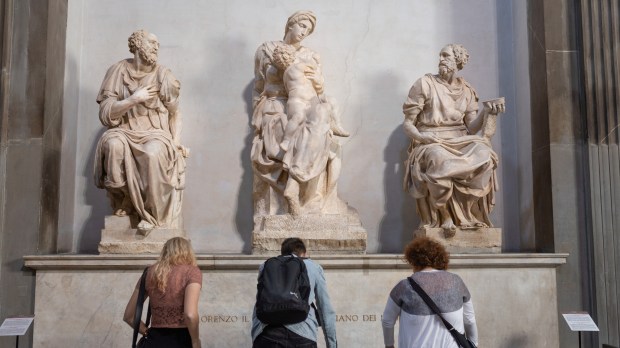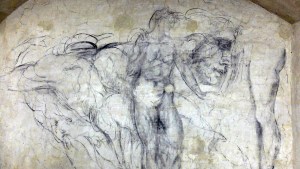A Medici family chapel created by Michelangelo has been restored with the aid of dirt-eating bacteria just in time for the 545th anniversary of the great master’s birth.
The chapel, adjoining the Church of San Lorenzo in Florence, includes sculptures representing members of the Medici family along with four allegorical figures representing different times of the day, and the Madonna and Child, reported The Guardian.

According to the article, part of the sarcophagus was in particularly bad shape, because of the way its occupant was buried. The body of Alessandro Medici, who was assassinated in 1537, had been placed in the tomb without having been eviscerated.
“This meant that over time the organic liquids from the corpse had started to seep through and stain Michelangelo’s work,” reported The Guardian.
At the final stage of the eight-year restoration project, a bacteria-infused gel was applied to remove stains from the tomb.
The Guardian explained the process:
Scientists tested 11 strains of bacteria on marble before it was decided that three non-toxic varieties – Serratia ficaria SH7, Pseudomonas stutzeri CONC11 and Rhodococcus sp. ZONT – would be the most effective for Michelangelo’s masterpiece. Serratia ficaria, a bacterium that causes urinary tract infections, managed to remove dirt from the tomb in two days.
The successful experiment may bode well for other restoration projects — although it is possible that bacteria may not be as fond of soot and graffiti as they are of “organic liquids.”


